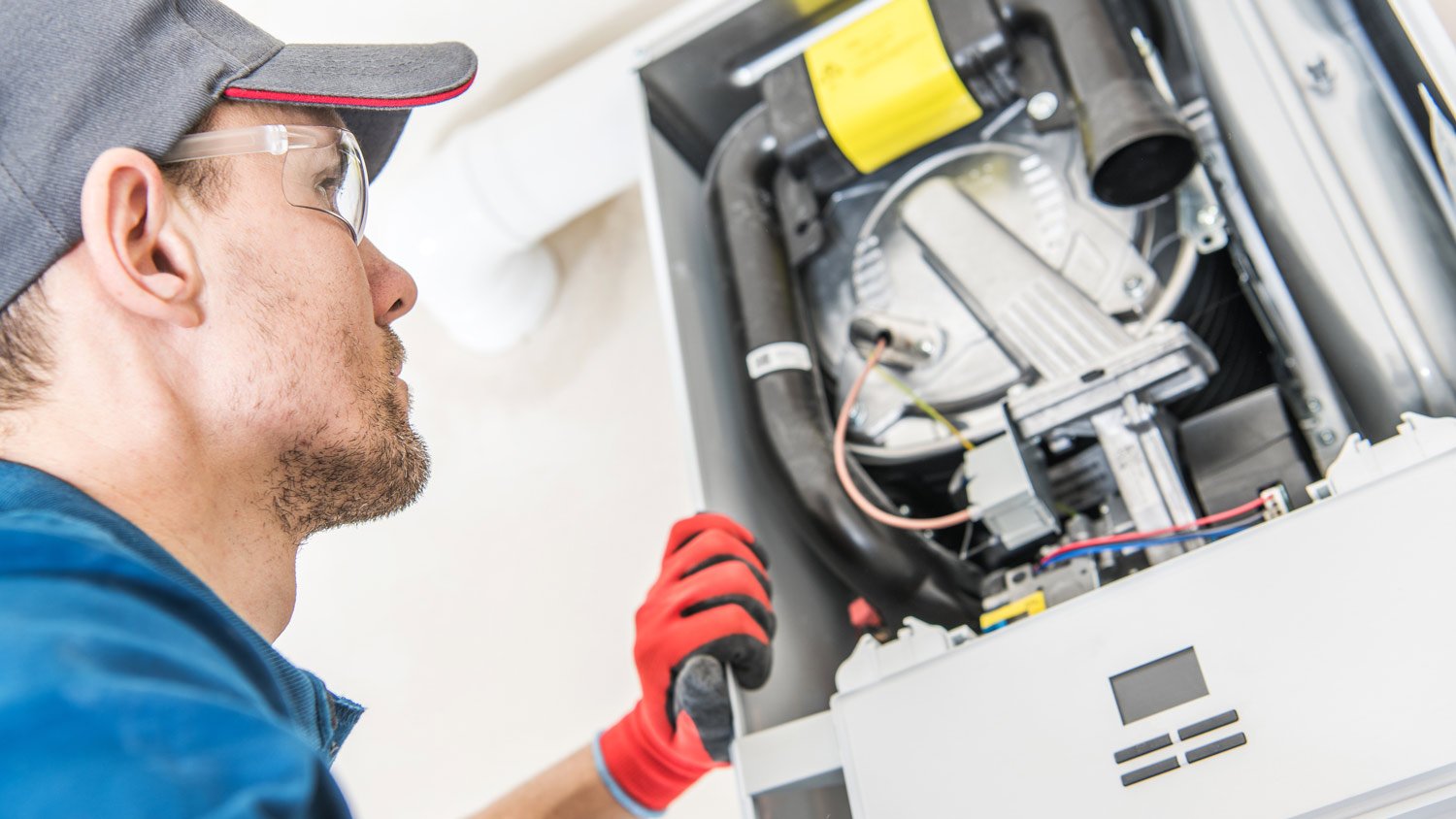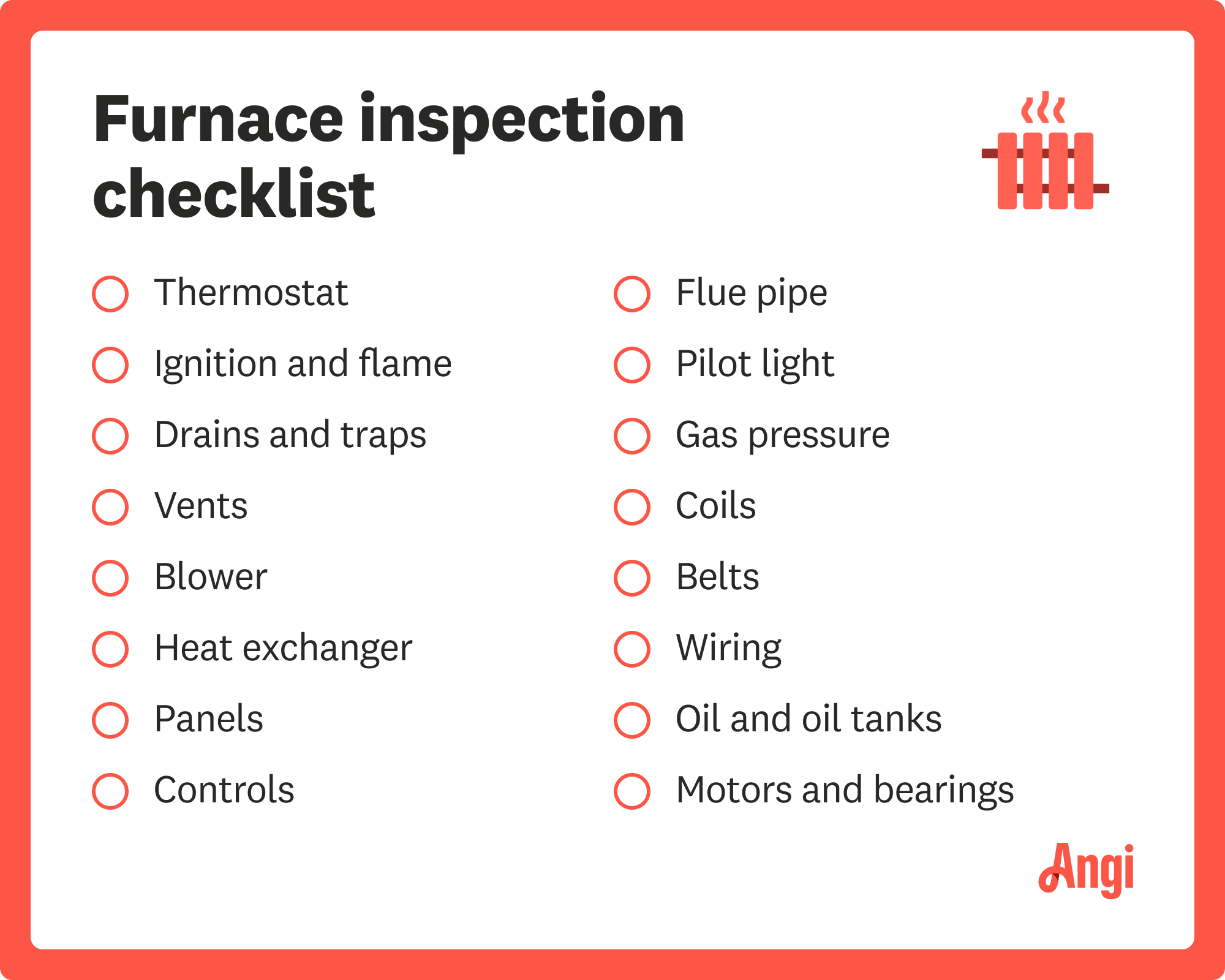
Discover the factors influencing air duct replacement cost in New York City. Learn how to save money and make an informed decision for your home's comfort.
Red tags are great for department store deals, not so much with your furnace


A red tag on your furnace means that the unit is unsafe to use in its current condition.
Red tagging can be the result of electrical problems, a broken heat pump, blockages, or physical damage to the system.
There are two types of red tags: Type A and Type B. A Type A tag is more severe, and a Type B tag is less severe (but still serious).
Furnace repairs cost anywhere from $65 to $1,400.
You hired an expert to conduct your bi-annual HVAC inspection, but now your pro tells you that your furnace has been red-tagged. That isn’t exactly a dream scenario, as it means they’ve found a critical safety issue with your unit that demands repair or replacement before your furnace can function again. We’ve broken down all the nuts and bolts of a red-tag furnace, including what it means exactly, what causes it, and what to do next.
A red-tag furnace is a designation assigned by either an HVAC pro or a utility worker, and it means the appliance is not safe to operate in its current condition. Red-tagging can apply to any appliances that require gas for operation, including water heaters, dryers, stoves, and, of course, furnaces. Whichever professional has red-tagged your appliance may shut off the gas to your home until the problem is resolved.
There are two types of furnace red tags that a technician can issue: Type A and Type B.
This type of tag represents more severe gas leaks that are an immediate hazard to your health, such as a severe carbon monoxide leak. If there’s a Type A leak, the technician will immediately shut off your gas until the problem is resolved. This type of red tag more often suggests that your furnace needs major repairs or a full replacement to function safely and legally again.
Install carbon monoxide alarms on every level of your home, in central locations, and outside bedrooms. Check all of your carbon monoxide detectors every month, and replace the batteries on a set schedule according to the manufacturer’s instructions.
These tags indicate that there isn’t an immediate danger to the home’s occupants, but there is an issue that needs to be addressed. With Type B tags, you usually have 30 days to make the necessary repairs. The costs associated with fixing the underlying issues for this tag are much lower, and a full furnace replacement isn’t always necessary.
As far as your home’s heating system is concerned, there are a few root causes that will get your furnace red-tagged, depending on the type of furnace you have.
Blockages in vents or chimney: Any blockage in your vents or chimney will cause the carbon monoxide (CO) that’s supposed to be released from your system to flow back into your home, which can lead to carbon monoxide poisoning.
Cracked vents: Cracked vents render the safety seals on your HVAC system useless, releasing deadly CO into your home.
Cracked heat exchanger: The heat exchanger on your furnace is the element that separates the safe hot air from carbon monoxide when the gas is burned. When the exchanger cracks, the hot air and gas can mix together and make their way into your home.
Broken heat pump: Heat pumps work similarly to heat exchangers, and if it uses gas, it could emit CO if it’s broken. Replacing a broken heat pump might be the only solution.
Electrical hazards: If you live in an area that frequently experiences flooding or heavy rains, your furnace could get damaged by the water and cause CO to leak into your air or a risk of electrical fire.
Other problems: There are several other things that can cause your furnace to be red-tagged, including a gas leak caused by built-up pressure and dirt buildup on the heating coils.

In many cases, the only fix for a red-tagged furnace is to replace the entire unit. If you have to replace your system, you can breathe easier knowing that in addition to being safe, a new furnace will be more energy efficient than an older model and increase your home value.
Replacing your red-tagged furnace is especially a good idea if one or more of the following applies:
Your repair costs total $1,200 or more
Your furnace is 10 or more years old
You’ve had ongoing issues with your furnace anyway
Your furnace is not covered under HVAC warranty
If your furnace has been red-tagged, you should get a second opinion from another HVAC professional before moving forward with furnace repairs or replacement. Get a second look to confirm the accuracy of the first opinion and avoid unnecessary work or expenses.
If you can’t repair your red-tagged furnace or the repair will cost more than a third of a replacement, you probably want to consider investing in a new furnace. Furnace repairs can range from as low as $65 to upwards of $1,400, depending on the issue. The average cost to repair a furnace is around $310.
On the other hand, replacing a furnace costs between $2,000 and $6,000, including installation, and new units average around $5,500. Take that total into account when speaking with a pro about repairing vs. replacing your furnace.

Sometimes, age and use simply wear a heating system down and lead to issues that compromise your safety or the safety of your home. Unfortunately, red-tagging is unavoidable in some scenarios.
However, an annual or biannual inspection and cleaning and tune-up will help keep your HVAC system in its best shape and detect any problems that may be on their way.
From average costs to expert advice, get all the answers you need to get your job done.

Discover the factors influencing air duct replacement cost in New York City. Learn how to save money and make an informed decision for your home's comfort.

The average boiler installation cost depends on size, system type, and other factors. Keep reading to learn the cost of a new boiler in New York City.

You’ll spend an average of $5,466 on new furnace costs in New York, New York, but your final price depends on a number of factors. Here’s what to expect.

If you’re thinking about an alternative to a traditional HVAC system, you may want to consider a heat pump. Read on for more about heat pump systems.

If you’re having trouble with your furnace firing up or your house just won’t get warm, use this simple DIY guide to check if your furnace ignitor is bad.

Knowing when to replace your boiler will help you avoid last-minute emergencies in the middle of winter. Here are seven signs that you may need a brand-new unit.